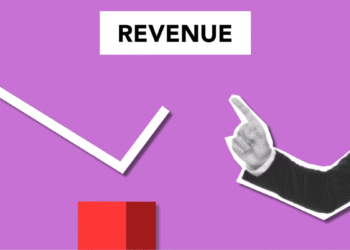I used to hate pop-ups. I thought they were annoying, pushy, and honestly kinda desperate-looking.
You know the ones: those flashing boxes that block your screen right as you’re trying to check out or read something.
But that all changed after I launched my second digital product — a simple Notion template bundle. I wanted to increase my average order value without slashing prices or creating new products. A friend suggested using pop-ups for cross-selling. I cringed. But I tested it anyway.
And wow… I was so wrong.
Turns out, when done right, pop-ups are not annoying — they’re helpful. Smart pop-ups, especially the ones triggered during checkout or after someone adds a product to cart, can be crazy effective for cross-selling without feeling pushy.
Here’s what I learned (after testing a few setups on Payhip and Shopify) — the six legit benefits of using pop-ups for cross-selling.
1. Pop-Ups Grab Attention at the Right Time
This one hit me fast.
The first time I added a “Wait! You might like this too…” pop-up right after a customer added something to their cart, I saw a 12% bump in additional item sales. Why? Because it stopped people just long enough to say, “Hey, this goes great with what you just picked.”
These aren’t random pop-ups. They’re contextual. They’re based on behavior. If someone’s buying a digital planner, it makes sense to suggest a matching calendar layout or productivity ebook — right then.
And people actually read it. Unlike banners or sidebars, pop-ups force a second look — but only if they’re timed well and feel relevant. It ties into the psychology of successful upselling — catching people while they’re still in decision-making mode.
2. They Help You Increase Average Order Value (AOV)
My AOV was stuck at around $18 for months.
After I implemented smart pop-ups that offered small cross-sells — like “Add this $5 bonus worksheet?” — my AOV jumped to $24 in just two weeks. That’s without changing a single product.
Small cross-sell items offered through well-timed pop-ups create micro-upgrades. People are already buying, and when you offer a relevant low-cost item, it feels like an easy “why not?” moment.
And those moments add up. Fast. If you’re not sure what products to suggest, these 15 best cross-sell products for digital creators can give you solid inspiration.
3. You Can Automate the Whole Thing
This was my favorite part. I’m not a tech person, I just want stuff to work.
With tools like Payhip, Shopify apps like “Honeycomb” or “PickyStory,” or even Mailchimp if you’re selling through email — you can set up trigger-based pop-ups with no code. I spent about 30 minutes setting mine up, and now it runs on autopilot.
You can customize what products show, when they appear (cart, product page, checkout), and who sees them (new vs. returning customers). So it’s not just “pop-up everyone” — it’s smart, segmented, and intentional.
Want to take it a step further? Try building automated upsell funnels on Payhip — it’s game-changing once set up.
4. Pop-Ups Give You a Chance to Add Value, Not Just Sell
This was a mindset shift for me.
I started writing my pop-ups like I was a friend helping someone shop. Instead of “Buy this now!” I said things like:
-
“Lots of folks pair this with our goal tracker!”
-
“Want to make the most of your planner? This cheat sheet helps.”
-
“P.S. This bonus template is only $3 when you buy now.”
Those tiny tweaks made my pop-ups feel helpful, not salesy. And honestly, I got more thank-you emails than complaints. People like being guided when it makes sense.
This approach is the foundation of writing high-converting upsell copy clear, conversational, and focused on value.
5. They’re Easy to A/B Test and Improve
This was something I didn’t expect to enjoy.
I started testing different headlines, product pairings, and discount offers in my pop-ups. Sometimes I’d run a “limited time bonus” pop-up, and other times I’d show a no-discount suggestion just to see what worked better.
The results? Some pop-ups converted at 4%, others hit 15%. I wouldn’t have known if I didn’t test.
Most pop-up tools let you do basic A/B testing. Even changing “You might like this” to “Add this before checkout” gave me a bump. It’s addicting in the best way. And if you want your tests to really move the needle, limited-time upsell offers that convert are definitely worth experimenting with.
6. Pop-Ups Work for Both Physical and Digital Products
At first, I thought pop-ups only made sense for Shopify stores or retail brands. But I’ve seen them crush it for:
-
Course sellers offering bonus modules
-
Digital creators bundling templates
-
Coaches adding mini-sessions at checkout
-
Etsy-style sellers upselling printables
I personally use mine to cross-sell bonus files, checklists, and add-on guides. Even a $2 bump adds up fast if you’re selling at scale. And pop-ups make it seamless.
Final Thoughts: Don’t Knock It ‘Til You Try It
I was a pop-up hater. Guilty.
But once I saw how much value they actually added to the customer journey — and how much revenue they quietly created — I was sold.
If you’re hesitant, start simple:
-
Pick one product
-
Add a helpful, related cross-sell offer
-
Use a pop-up tool with timing rules
-
Watch what happens
Chances are, you’ll wonder why you didn’t try it sooner.








